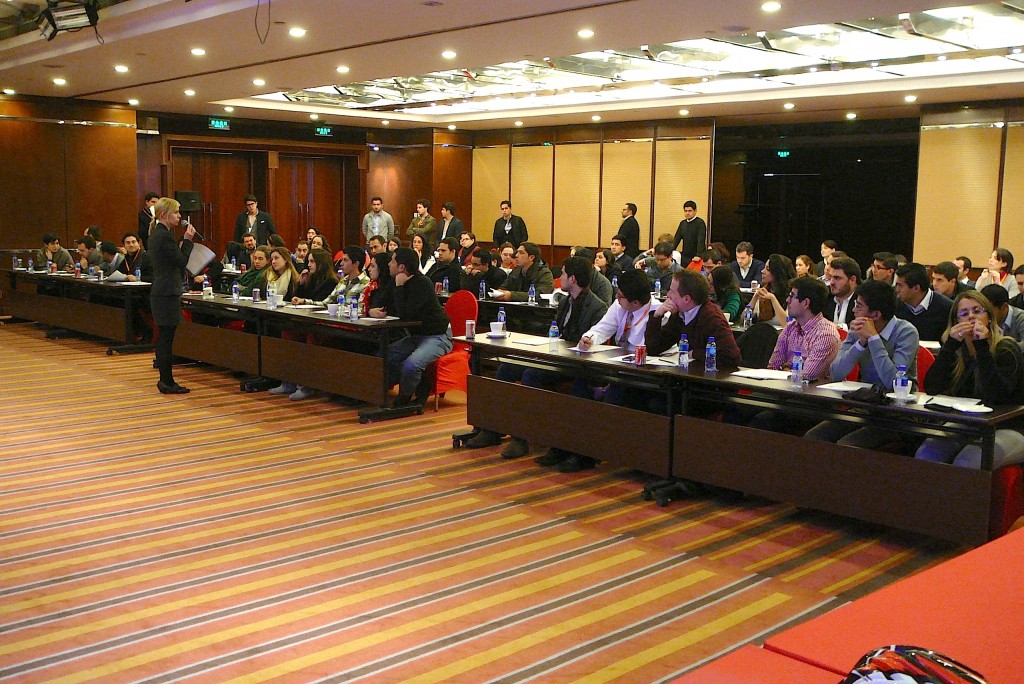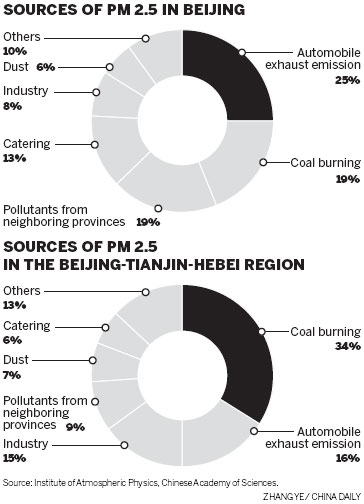Yesterday I had one more seminar talk, this time on a topic not covered in the past: the energy situation in China, the status of renewable energy, China government policies to improve the environment; the use of coal, oil, gas, shale gas, and more. The talk, including Q&A took the usual 90 minutes. Location: Novotel Peace Hotel.
I used several quotes from my book that does give a detailed overview on those issues.

The IPADE groups are always pretty large, this time “only” about 75 students (including one from my hometown, Ghent, Belgium). I have been talking to IPADE for several years.
The tours are organized by ISP (www.studyprograms.com), a very efficient company from Prague.
Next Monday: Notre Dame University (USA). Topic: China introduction, doing business and lobbying in China, facing the Chinese bureaucracy.
My Books
Don’t only point the finger at China
Yes, we have many problems here in China. But as I mentioned in my book, we should not always point the finger at China. See here what still happens in the biggest democracy in the world:
“Just two months before full implementation of a landmark 2010 law mandating that all Indian children between the ages of six and 14 be in school, some 28 million are working instead, according to Unicef. Child workers can be found everywhere – in shops, kitchens, farms, factories and construction sites. The Indian Parliament may soon consider yet another law to ban child labour, but even activists say that more laws, while welcome, may do little to solve one of India’s most intractable problems.”
Read the full story:
Child labour in India rife despite tough laws
http://www.scmp.com/news/asia/article/1159276/child-labour-india-rife-despite-tough-laws
Indian authorities fail to crack down on bosses despite a ban on youngsters working down pits
27 February, 2013 – SCMP
The New York Times in Khliehriat
The cover-up of China’s soil pollution
“Report on mainland China’s soil pollution a ‘state secret’”, article in SCMP, 26 February:
http://www.scmp.com/news/china/article/1158602/report-mainland-soil-pollution-state-secret
Ministry rejects request to make findings of five-year study of ground contamination public, leaving critics wondering what’s being hidden.
I love the statement. In other words: “Yes the situation is very grave, to the point you better don’t know, because this is China policy”. How more clear can that be. In my book I mention some data on soil pollution in China: agricultural land, 10% contaminated with heavy metals – official figure probably too low; contaminated soil under new apartment blocks. Add to that the alarming levels of water pollution, in rivers, lakes and underground, then you get the picture. Fortunately the Chinese people don’t swallow anymore the empty talk of the government. Yes, when will they learn “Serve the People”?
Gilbert’s interview on CRI in Portuguese
Ver o post Entrevista: “Sala de Visitas” da CRI
Aqui está o link! Passou neste mês.

Sala de Visitas: Gilbert Van Kerckhove, um engenheiro belga que vive em Beijing compartilha suas vivências e reflexões sobre o Brasil e a China:
http://portuguese.cri.cn/741/2013/02/21/1s162777.htm
Duração: 15 minutos.
Air pollution dangers in Beijing and Hong Kong: details
The latest research from the Chinese Academy of Sciences found a large amount of nitrogen-containing organic compounds in the recent smog that shrouded Beijing and neighboring cities. The compounds are key components of the photochemical smog that shrouded Los Angeles during the 1940s and 1950s, causing hundreds of premature deaths and around 2,000 traffic accidents in a single day in 1954.
Exposure to nitrogen dioxide might damage the lungs and increase respiratory infections, especially in children and the elderly.
The nitrogen-containing organic compounds are mainly from exhausts and account for a large amount of the city’s PM2.5, it is said.

Pollutants in the Pearl River Delta are more dangerous than those choking the capital because they contain higher levels of hazardous nitrogenous organic compounds, according to an expert at the China Academy of Meteorological Sciences.
The volatile organic compounds were mainly emitted during the manufacture of shoes and cosmetics and were the main components of photochemical smog.
Researchers from the London School of Hygiene and Tropical Medicine established a clear link between exposure to PM2.5 pollutants and early death after following 154,000 patients in England and Wales who had been taken to hospital with heart attacks between 2004 and 2007. They followed the patients for more than three years after their release from hospital. Nearly 40,000 died in that period. If PM2.5 levels had been reduced to their natural background rate, they calculated the number of deaths would have fallen by 4,873, or 12%.
“We found that for every 10 microgrammes/m3 in PM2.5, there was a 20% increase in the death rate,” said the research.
About 30 times thinner than a human hair, PM2.5 particles have long been identified as a respiratory problem, as their size enables them to lodge deep in the lungs. The average PM2.5 level in Hong Kong is around 30 to 35 microgrammes/m3. The World Health Organization has set guidelines of a maximum of 10 microgram of PM2.5/m3 as an annual average exposure.
In Beijing last month, PM2.5 levels reached 993 microgrammes/m3, almost 40 times the WHO’s recommended safe limit of 25 microgram over a 24-hour period, triggering a public outcry.
If some people still underestimate the dangers of air pollution, they are really naïve.
Read more:
21 February 2013 – Smog in Pearl River Delta ‘worse than in Beijing’
http://www.scmp.com/news/china/article/1154950/smog-pearl-river-delta-worse-beijing
and this one, with a questionable title:
19 February 2013 – ‘Smog readings in Beijing nothing to be concerned about’
By Zheng Xin (China Daily)
http://usa.chinadaily.com.cn/epaper/2013-02/19/content_16236264.htm